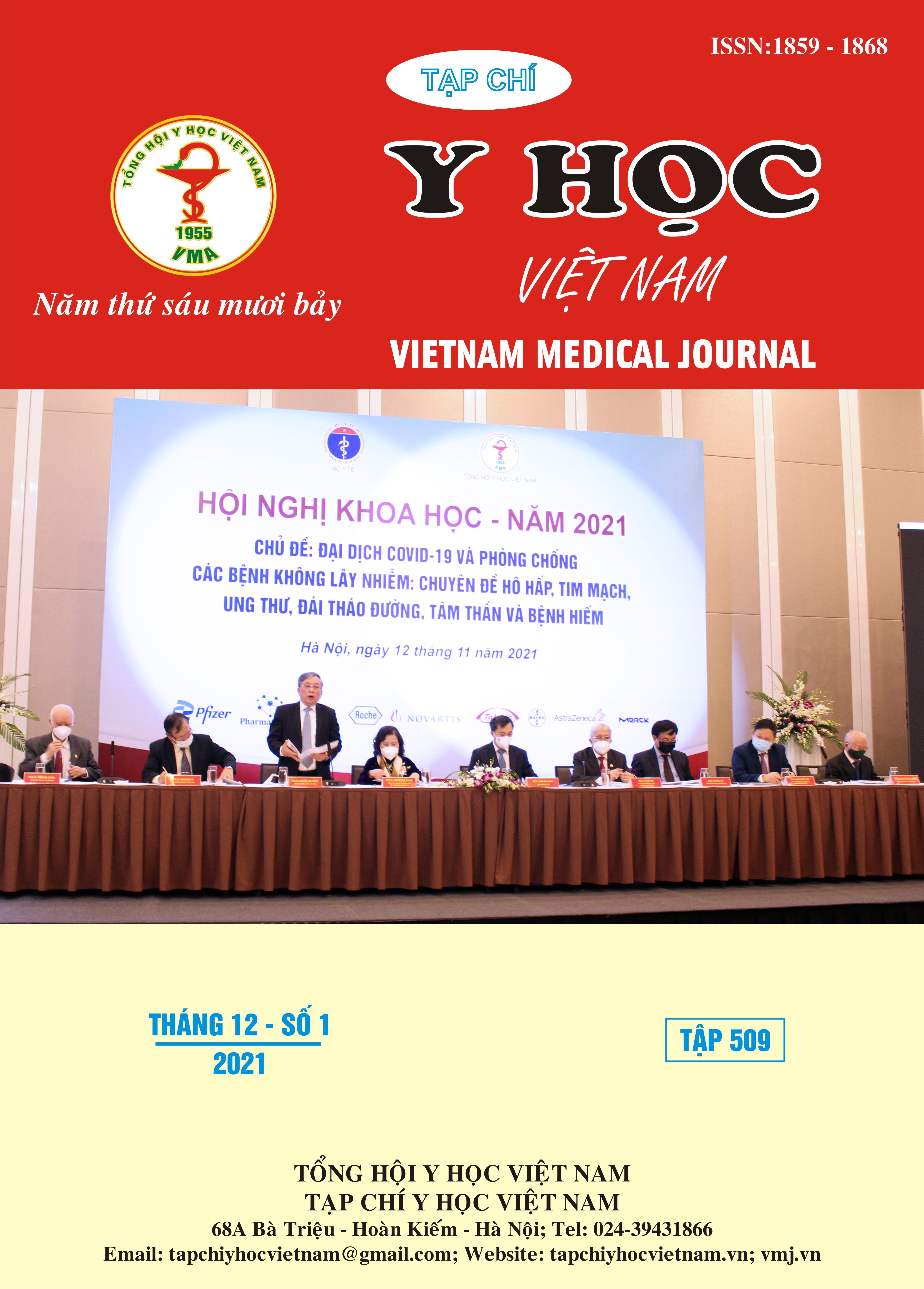ANTINEUTROPHIL CYTOPLASMIC ANTIBODIES IN SYSTEMIC LUPUS ERYTHEMATOSUS
Main Article Content
Abstract
Objectives: My research aims to examine the role of antineutrophil cytoplasmic antibodies in systemic lupus erythematosus. Methods and Methodology: This is cross-sectional descriptive study on 115 patients diagnosed with systemic lupus erythematosus according to SLICC 2012 Standard treated at the center of Allergology and Clinical Immunology in Bach Mai hospital from July 2020 to September 2021. Results: the percentage of antibodies ANCA, MPO – ANCA, PR3-ANCA being positive are 33%,3.5%, 32.2%, respectively. The positive antibody PR3-ANCA is relevant to the patients whose illness time is less than 2 years (p=0.05). The common clinical characteristics in the SLE patients with positive ANCA, c-ANCA are arthritis (57.9% and 56.8%), acute skin rash - butterflu rash (26.3% and 24.3%), interstitial lung disease (26.3% and 24.3%), multi membrane effusion (34.2% and 35.1 %), ulcers in skin ((18.4% và 18.9%), Raynaud (16.2% và 16.7%), C3 deficiency (97.4% and 97.3%), C4 deficiency (84.2% and 83.8%) and 100% of SLE patients who have positive ANCA, c – ANCA antibodies has positive dsDNA. The positive ANCA antibody in SLE patients relevant to characteristics such as ulcers in skin chi (OR= 4.121, p = 0.038), Raynaud (OR= 7.258, p = 0.014), C4 deficiency (OR= 4, p = 0.004), surplus dsDNA (OR= 1.561, p = 0.029), severe disease activity level (OR=2.829, p=0.017). Conclusions: Patients diagnosed with systemic lupus erythematosus have ANCA antibody which is relevant to severe disease activity level and skin damage, Raynaud. There is no link or corelation between ANCA antibody with kidney damage in SLE.
Article Details
Keywords
Systemic lupus erythematosus, ANCA, c-ANCA, SLEDAI, lupus nephritis
References
2. Jakes RW, Bae S-C, Louthrenoo W, Mok C-C, Navarra SV, Kwon N. Systematic review of the epidemiology of systemic lupus erythematosus in the Asia-Pacific region: Prevalence, incidence, clinical features, and mortality. Arthritis Care & Research. 2012;64(2):159-168. doi:10.1002/ acr.20683
3. Kotzin BL. Systemic Lupus Erythematosus. Cell. 1996;85(3):303-306. doi:10.1016/S0092-8674(00)81108-3
4. Pauzner R, Urowitz M, Gladman D, Gough J. Antineutrophil cytoplasmic antibodies in systemic lupus erythematosus. J Rheumatol. 1994;21(9):1670-1673.
5. Galeazzi M, Morozzi G, Sebastiani GD, et al. Anti-neutrophil cytoplasmic antibodies in 566 European patients with systemic lupus erythematosus: prevalence, clinical associations and correlation with other autoantibodies. European Concerted Action on the Immunogenetics of SLE. Clin Exp Rheumatol. 1998;16(5):541-546.
6. Su F, Xiao W, Yang P, et al. Anti-neutrophil cytoplasmic antibodies in new-onset systemic lupus erythematosus. Anais Brasileiros de Dermatologia. 2017;92(4):466-469. doi:10.1590/abd1806-4841.20175476
7. Wang S, Shang J, Xiao J, Zhao Z. Clinicopathologic characteristics and outcomes of lupus nephritis with positive antineutrophil cytoplasmic antibody. Ren Fail. 2020;42(1):244-254. doi:10.1080/0886022X.2020.1735416
8. Nguyễn Hữu Trường. Nghiên cứu mối tương quan giữa mức độ hoạt động bệnh với một số tự kháng thể trong lupus ban đỏ hệ thống. Luận Văn Tiến Sĩ Học.2017:Trường Đại học Y Hà Nội.
9. I. M, M. D, K. H. Antineutrophil cytoplasmic antibodies in patients with systemic lupus erythematosus: prevalence, antigen specificity, and clinical associations. Rheumatology International. 2001;20(5):197-204. doi:10.1007/s002960100108


